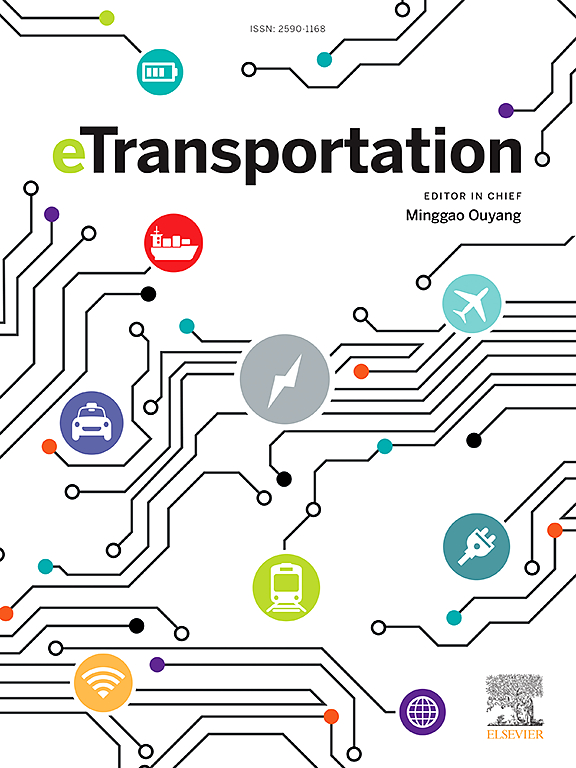State estimation of lithium-ion batteries via physics-machine learning combined methods: A methodological review and future perspectives
IF 17
1区 工程技术
Q1 ENERGY & FUELS
引用次数: 0
Abstract
Lithium-ion batteries (LIBs) have become indispensable in modern energy storage applications. However, accurate and reliable state estimation, such as state of charge (SOC), state of health (SOH), and other critical variables, remain significant challenges, especially as LIBs are being pushed to their performance limits in advanced applications. Traditional methods can be broadly categorized into physics-based (PB) and machine learning (ML) methods. Each approach has its strengths but also inherent limitations. In recent years, integrating PB and ML methods has emerged as a promising solution to address these challenges, combining the physical interpretability of PB models with the adaptability and efficiency of ML techniques. This integration has demonstrated remarkable improvements, reducing estimation errors by approximately half compared to traditional methods. This review systematically categorizes these combined methods into three main strategies—serial, parallel, and hybrid—and further analyzes their applications in LIB state estimation, focusing on key variables such as voltage, SOC, SOH, state of temperature (SOT), and other states. Additionally, this review discusses key challenges in real applications and presents future outlooks. By synthesizing the current state of knowledge, this work provides valuable guidance specifically tailored for electric vehicle engineers and energy storage researchers facing real-world deployment challenges, offering potential benefits in terms of cost reduction and efficiency improvement in battery management systems. Ultimately, the accuracy, efficiency, and reliability of LIB state estimation can be advanced through hybrid methods, bridging the gap between academic research and industrial applications.
通过物理-机器学习相结合的方法对锂离子电池的状态估计:方法回顾和未来展望
锂离子电池(LIBs)已成为现代能源存储应用中不可或缺的一部分。然而,准确可靠的状态估计(如荷电状态(SOC)、健康状态(SOH)和其他关键变量)仍然是一个重大挑战,特别是在高级应用中,lib的性能正被推向极限。传统的方法可以大致分为基于物理(PB)和机器学习(ML)的方法。每种方法都有其优点,但也有其固有的局限性。近年来,将PB模型的物理可解释性与ML技术的适应性和效率相结合,将PB和ML方法相结合,成为解决这些挑战的一种有希望的解决方案。这种集成已经证明了显著的改进,与传统方法相比,减少了大约一半的估计误差。本文系统地将这些组合方法分为串行、并行和混合三种主要策略,并进一步分析了它们在LIB状态估计中的应用,重点关注电压、SOC、SOH、温度状态(SOT)和其他状态等关键变量。此外,本文还讨论了实际应用中的关键挑战,并展望了未来。通过综合当前的知识状态,这项工作为面临现实部署挑战的电动汽车工程师和储能研究人员提供了有价值的指导,在电池管理系统的成本降低和效率提高方面提供了潜在的好处。最终,可以通过混合方法提高LIB状态估计的准确性、效率和可靠性,弥合学术研究与工业应用之间的差距。
本文章由计算机程序翻译,如有差异,请以英文原文为准。
求助全文
约1分钟内获得全文
求助全文
来源期刊

Etransportation
Engineering-Automotive Engineering
CiteScore
19.80
自引率
12.60%
发文量
57
审稿时长
39 days
期刊介绍:
eTransportation is a scholarly journal that aims to advance knowledge in the field of electric transportation. It focuses on all modes of transportation that utilize electricity as their primary source of energy, including electric vehicles, trains, ships, and aircraft. The journal covers all stages of research, development, and testing of new technologies, systems, and devices related to electrical transportation.
The journal welcomes the use of simulation and analysis tools at the system, transport, or device level. Its primary emphasis is on the study of the electrical and electronic aspects of transportation systems. However, it also considers research on mechanical parts or subsystems of vehicles if there is a clear interaction with electrical or electronic equipment.
Please note that this journal excludes other aspects such as sociological, political, regulatory, or environmental factors from its scope.
 求助内容:
求助内容: 应助结果提醒方式:
应助结果提醒方式:


